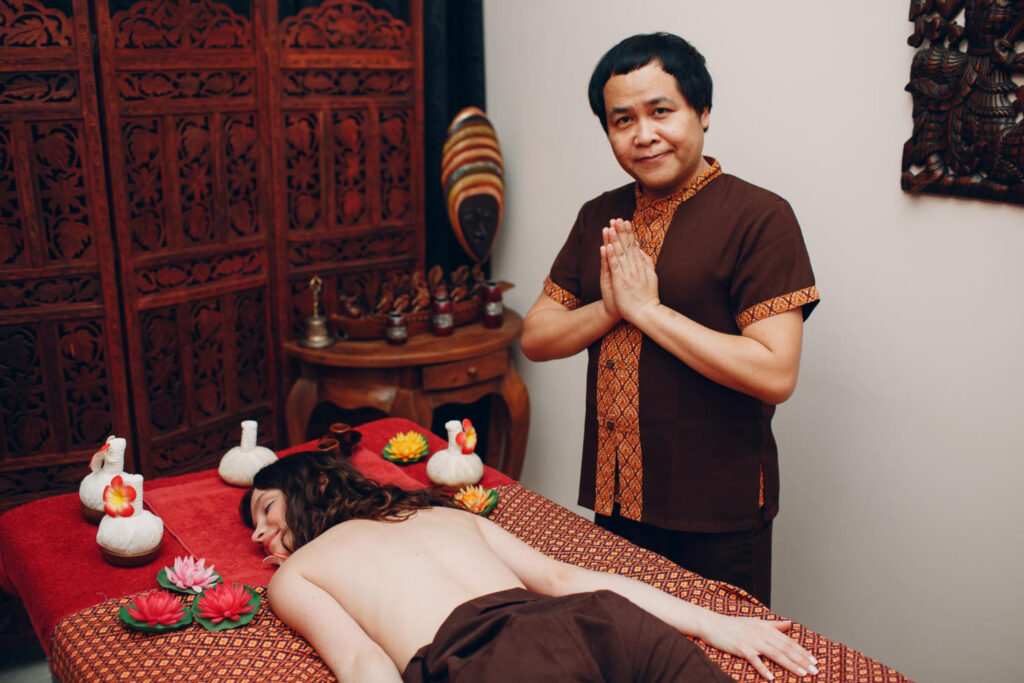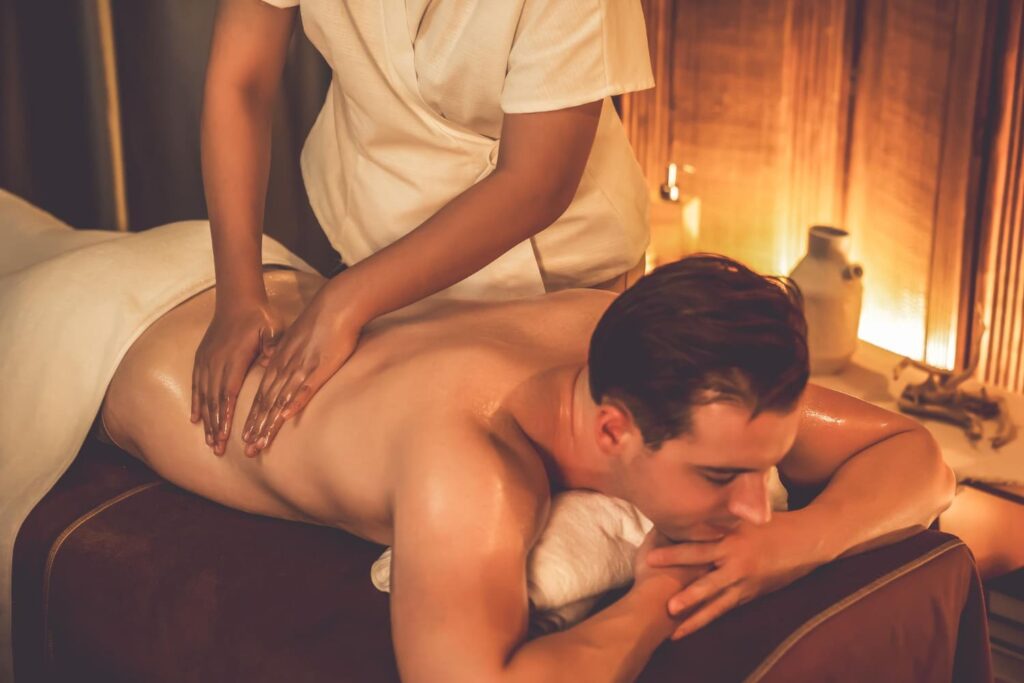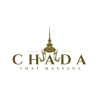Massage therapy is the ultimate sanctuary for relaxation after a week full of hustle and bustle. With a myriad of massage techniques at your fingertips, you need to understand each one to know which one aligns with your needs.
Ahead, we’ll discuss the role of a massage therapist and the variety of massage therapies, from smoothly glided Swedish massage to broad strokes of trigger-point therapy. Read on to discover your ideal technique!
The Role of a Massage Therapist

Massage therapists are trained professionals who specialise in performing massage therapy with various massage techniques and give clients the physical and emotional relaxation they need. On top of that, they are also in charge of creating a serene, soothing therapy environment to enhance clients’ experiences.
Research revealed the effects of massage therapy, including reduced state anxiety, blood pressure, and heart rate. It also enhances clients’ overall mental health. A therapist helps clients achieve these benefits after single or multiple sessions.
For several conditions like postoperative pain in cancer patients, a collaboration of a massage therapist and a physician is recommended. That’s why a therapist has to master different massage techniques.
Variation of Massage Techniques


When it comes to choosing the most suitable massage techniques, several factors must be considered. Read our explanation about each massage technique below to gain a deeper understanding!
Swedish Massage
If you’re looking for a light, relaxing experience, a Swedish massage is the answer. It is designed to enhance relaxation and well-being through a combination of strokes that warm up the muscles, release tension, and improve circulation.
It involves effleurage (long, gliding strokes), petrissage (kneading), friction (circular movements), tapotement (rhythmic tapping), and vibration (shaking motions) to achieve muscle relief and stress reduction.
Typically, oil or lotion, such as lavender or eucalyptus, is applied to facilitate smooth movements and boost the therapeutic experience.
Sports Massage
Are you an athlete who wants to enhance performance and prevent injuries? Or are you someone who exercises often? Consider sports massage.
This massage is a focused and systematic form of bodywork that targets muscles used in specific sports, going beyond muscle manipulation to address fascia, tendons, and ligaments. The goal is to correct imbalances caused by athletic performance.
When you engage in repetitive movements during training, such as running or hiking, soft tissue imbalances can occur around joints. These imbalances may lead to dysfunction, tension, and pain.
It enhances the range of motion, flexibility, and overall well-being.
Deep Tissue Massage
For chronic pain relief, deep tissue massage is the answer. This technique aims at the deeper tissue structures, which is the connective tissue.
It uses slow, firm strokes and pressure of the therapist’s fingers or elbows to ease and release tension deep in your muscles.
Often used to treat chronic aches, pain, and tension in the neck, back, and shoulders, this type of massage is beneficial for those who suffer from conditions such as stiff necks, low back tightness, sore shoulders, and injuries, including fibromyalgia and lower back pain.
Reflexology
Reflexology involves specific pressure points, which are on the feet, hands, and ears, which correspond to different organs and systems of the body.
This is rooted in traditional Chinese medicine practice, which aims to restore balance and promote health by improving circulation, reducing pain and stress, and enhancing relaxation.
Hot Stone Massage
Living up to its name, hot stone massage uses heated stones in addition to hands to massage the clients’ bodies. The stone’s warmth and gentle pressure help alleviate tension, improve circulation, and relax muscles. This technique is especially suitable for those seeking relaxation from stiffness.
Indian Head Massage
Indian head massage, also known as champissage, is a traditional therapy that focuses on massaging acupressure points along the head, neck, face, and shoulders to improve hair and scalp condition.
Originating from the Ayurvedic medicine system, it’s believed to connect the mind and body, enhancing both physical and mental wellness. It’s typically done while seated and through light clothing.
Shiatsu Massage
Originating from Japan, the shiatsu, or “finger pressure” technique, involves applying rhythmic pressure to specific points on the body using fingers, elbows, and palms. This technique aims to balance the body’s energy flow, known as ‘qi’ or ‘ki’, by targeting meridian channels, which are pathways that carry this vital life force.
Shiatsu is performed on a mat or a futon through clothing and does not require oils, distinguishing it from other massage types.
Remedial Massage
Instead of a massage type, remedial massage is actually a qualification involving targeted pain or injury treatment. The therapist puts different levels of pressure based on the severity of the issue.
This massage is commonly used to treat headaches, chronic pain, arthritis, shoulder or back pain, fatigue, and other injuries.
Myotherapy
Similar to remedial, myotherapy is also a qualification that treats and prevents joint movement immobility and soft tissue pain due to myofascial dysfunction.
Pre-assessment is important to measure the treatment plan suitable for each client’s issue. Some techniques used are trigger-point therapy, dry needling, joint mobilisation, and more.
Aromatherapy
With aromatherapy, indulge in the calming sensation of essential oils during massage sessions. This is one of the best ways to relax your senses while getting your body massaged. Some common choices include cedarwood, tea tree, eucalyptus, geranium, juniper, and more.
Trigger-point Therapy
Similar to its name, this therapy focuses on treating trigger points in your body that hold tension, which leads to pain. Typically, therapists use flowing, broad strokes to treat the issue.
Frequently Asked Questions
What makes a relaxation massage and a therapeutic massage different?
The difference lies in their purpose: a relaxation massage is aimed at stress reduction and overall calmness, using light to medium pressure and long strokes, while a therapeutic massage targets specific health issues or injuries, using deeper pressure and focused techniques to alleviate pain and improve mobility.
Is deep tissue massage better than relaxation massage?
It depends on individual needs. Deep tissue is ideal for chronic pain and muscle tightness, while relaxation massage is best for stress reduction and general well-being.
What makes deep tissue massage and remedial relaxation different?
Deep tissue massage focuses on reaching muscle tissue’s deep layers to release tension and knots. In contrast, remedial massage aims to locate the root cause of the issue and provide a targeted treatment plan.
Conclusion
Massage therapy is a pathway to a healthier, more relaxed life. From the light strokes of Swedish massage to the targeted pressure of deep tissue, each technique offers unique benefits tailored to your needs.
At Chada Thai Massage, we understand the art and science of massage therapy. Our professional therapists are ready to guide you on a journey of relaxation and rejuvenation with various massage techniques. Book your session at Chada Thai Massage today!
